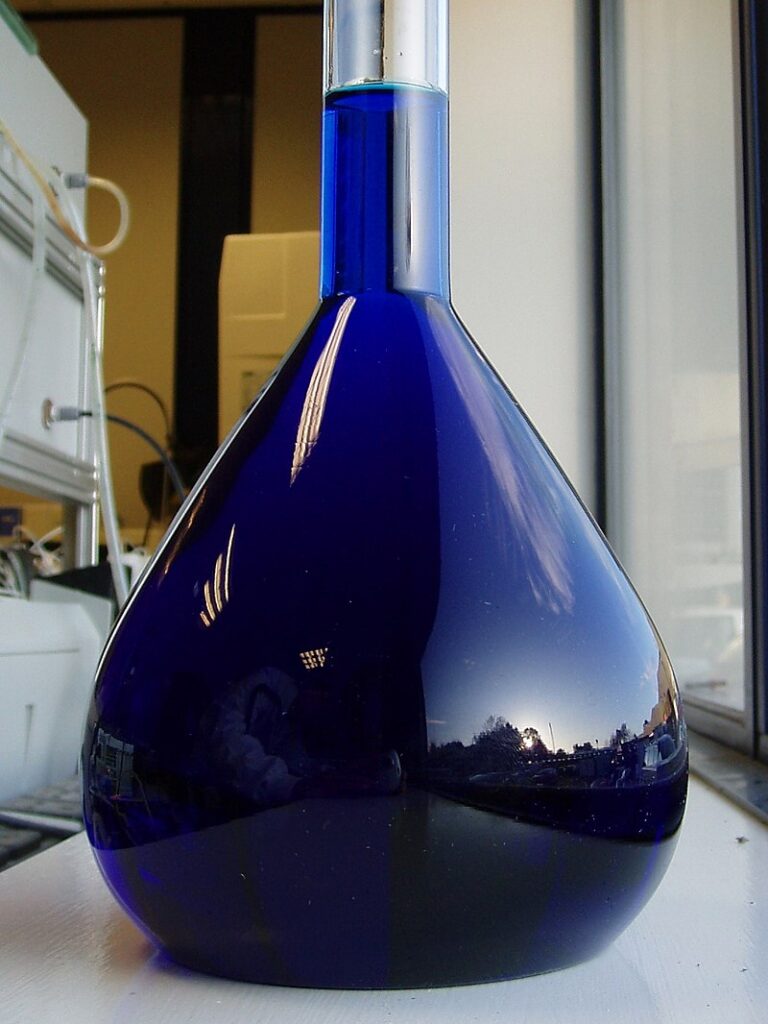In recent years, methylene blue has garnered increasing attention in the wellness and biohacking communities for its fascinating properties and potential health benefits. Originally synthesised in the 19th century and used for a variety of medical applications, methylene blue is now being explored for its role in cognitive enhancement, anti-ageing, and cellular health. But what exactly is methylene blue, and how is it used today? Let’s delve into the history, benefits, and modern uses of this intriguing compound.

What Is Methylene Blue?
Methylene blue (MB) is a synthetic compound first developed in 1876. Historically, it has been used as a dye and as a medication, particularly for treating conditions such as malaria and methaemoglobinaemia (a disorder in which red blood cells can’t deliver oxygen effectively). It’s also been used in diagnostic procedures to stain tissues and track biological processes.
Chemically known as methylthioninium chloride, methylene blue works on a cellular level. It’s capable of crossing the blood-brain barrier and has an affinity for mitochondria—the powerhouses of the cell. This property underpins many of its modern wellness applications.
Cognitive Benefits and Brain Health
One of the most discussed applications of methylene blue in recent years is its potential to support cognitive function. Research suggests that low doses of methylene blue can enhance memory and mental clarity by improving mitochondrial function in the brain. This, in turn, helps support the production of adenosine triphosphate (ATP), which is essential for energy in all cellular processes.
Some preliminary studies indicate that methylene blue may even have neuroprotective effects. It’s being explored as a possible treatment or adjunct therapy for neurodegenerative diseases such as Alzheimer’s and Parkinson’s. While the research is still evolving, the compound’s ability to improve mitochondrial efficiency and reduce oxidative stress makes it a promising area of study.
Anti-Ageing and Longevity
As a powerful antioxidant, methylene blue helps neutralise free radicals and reduce oxidative damage, which is a major contributor to ageing and many chronic diseases. Its role in supporting mitochondrial health is also critical, as mitochondrial dysfunction is closely linked with age-related decline.
A 2017 study published in Scientific Reports suggested that methylene blue can enhance the longevity of skin cells and improve skin structure and function, pointing to potential applications in skincare and dermatology. Products containing methylene blue are beginning to appear in the beauty industry, marketed for their potential anti-ageing effects.
Energy and Physical Performance
Because methylene blue supports mitochondrial respiration, some wellness enthusiasts use it to boost energy levels and physical endurance. By improving the efficiency of oxygen use and cellular energy production, it may help individuals feel more energised, particularly during periods of physical or mental fatigue.
Biohackers and performance-focused individuals often incorporate methylene blue into their routines in very small doses to enhance cognitive and physical performance, although this should always be approached with caution and professional guidance.
Antimicrobial and Antiviral Properties
Methylene blue also exhibits antimicrobial and antiviral properties. It’s been used in medical settings for years to sterilise blood for transfusions and is known to inactivate various pathogens when exposed to certain wavelengths of light.
There has been growing interest in its potential to combat viral infections, particularly when used in conjunction with light therapy (photodynamic therapy). However, much of this research is still in experimental stages, and it’s not currently an approved treatment for viral infections in general practice.
Safety and Dosage Considerations
While methylene blue shows great promise, it’s important to note that dosage and purity are crucial. At higher doses, it can become toxic and cause serious side effects, including serotonin syndrome if taken alongside certain medications like SSRIs (antidepressants). Only pharmaceutical-grade methylene blue should be considered for internal use, and it must be used under medical supervision.
For nootropic and wellness purposes, extremely low doses—referred to as “microdoses”—are generally discussed in the literature. Self-experimentation without proper knowledge or oversight is not recommended.
Final Thoughts
Methylene blue is a compound with a rich history and a promising future in the world of modern wellness. From supporting brain health and energy levels to its potential anti-ageing and antiviral effects, it’s clear why interest in this blue-hued substance is growing. However, as with all supplements and interventions, it should be used responsibly and with a full understanding of both its benefits and risks. As research continues to uncover the full extent of its capabilities, methylene blue may well become a staple in holistic and functional health approaches.
